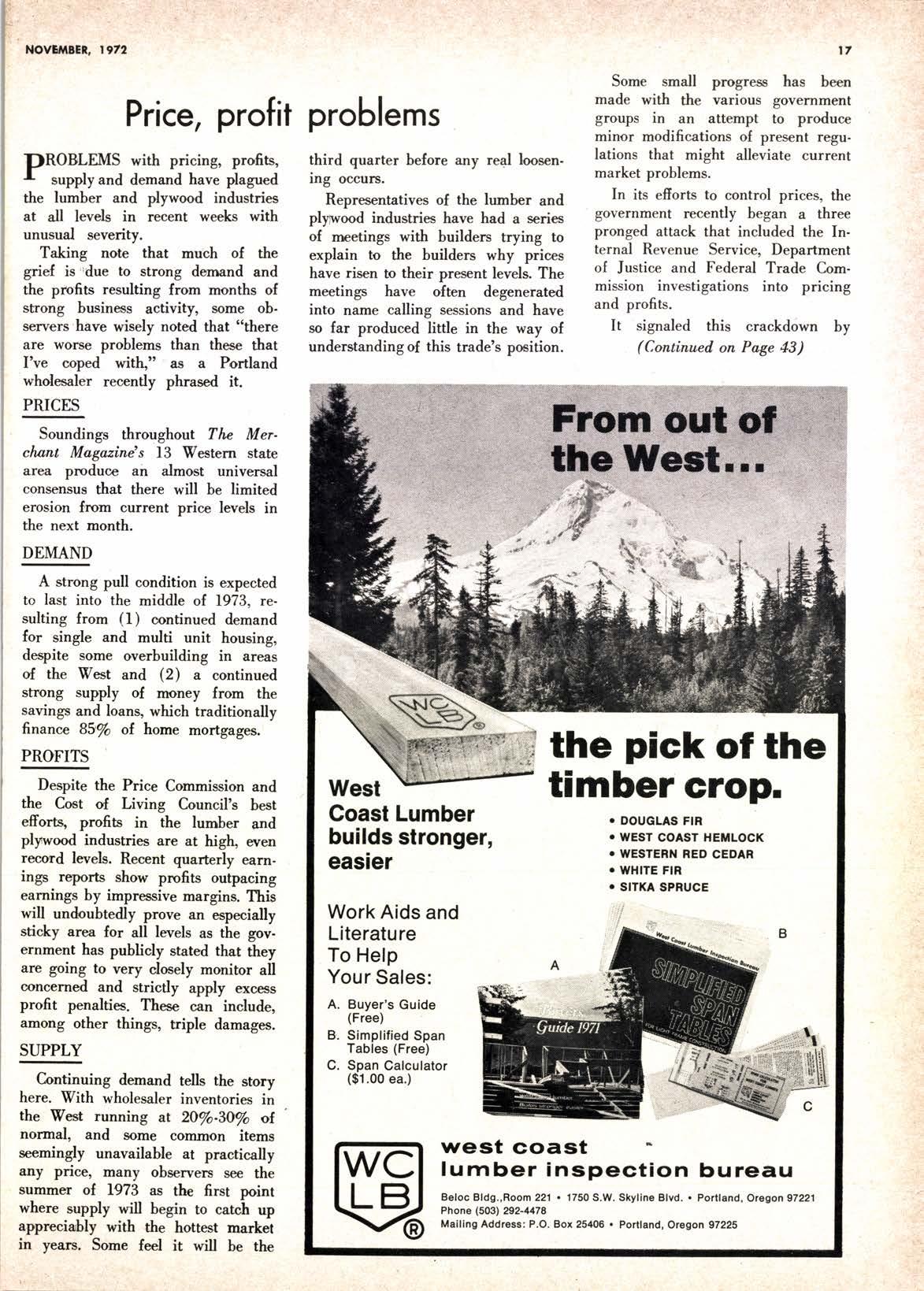
1 minute read
Price, profit problems
E)ROBLEI,IS with pricing, profits, I supplyand demand have plagued the lumber and plywood industries at all levels in recent weeks with unusual severity.
Taking note that much of the grief is ''due to strong demand and the profits resulting from months of strong business activity, some ob. servers have wisely noted that "there &re worse problems than these that I've copd with" as a Portland wholesaler recently phrased it.
Prtces
Sounfings throughout Tlrc Mer. chant Magazine's 13 lflestern state area produce an almost universal consensus that there will be limited erosion fnrm current price levels in the next month.
Demand
A strong pull condition is expected to last into the middle of 1973, resulting from (l) oontinued demand for single and multi unit housing, despite some overbuilding in areas of the West and (2) a continued strong supply of money from the savings and loanq which traditionally finance 83/o oI home mortgages.
Profits
Despite the Price Commission and the Cost of Living Council's best efforts, profits in the lumber and ply-wood industri€s are at high, even record levels. Re€nt guarterly earnings reports show profits outpacing earnings by impressive margins. This will undoubtedly prove an especially sticky area for all levels as the government has publicly statod that they are going to very dosely monitor all ooncerned and stricdy apply excess profit penalties. These can include, among other things, triple damages.
Supply
Continuing demand tells the story here. With wholesaler inventories in the l[est running at 2U/o-30/o ot norzrel, and some common items seemingly unavailable at practically any price, many observers see the summer of 1973 as tlre first point where supply will begin to catch up appreciably with the hottest market in years. Some feel it will be the third guarter before any real boeening occurs.
Representatives of the lumber and ply,vood industries have had a series of rrreetings with builders trying to explain to the builders why prices have risen to their pre€ent levels. The meetings have often degenerated into name calling sessions and have so far produced little in the way of understanding of this trade's poeition.
Some small prcgress has been made with the various government groups in an attempt to produce minor modifications of present regulations that might alleviate current market problems.
In its efiorts to control prices, the government recently began a three pronged attack that included the Internal Revenue Service, Depa.rtment of Justice and Federal Trade Commission investigations into pricing and profits.
It signaled this crackd6wn by (Continued, on Page 13)










